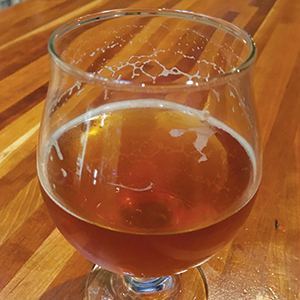Untapped | Kick to Start | The Science of Sour Beer | KraftBrew Summer Fest
A few years ago, it wasn’t uncommon for patrons of Original Gravity to come in asking for the hoppiest, heaviest IPA on tap. So says Rob Monroe, general manager at the downtown San Jose suds and sausage house.
That was amid the peak of the IPA craze. It seemed like every microbrewer was producing double- and triple-IPAs with high alcohol content and even higher international bittering unit scores. It got so crazy that Guinness even got in on the game, producing its own Nitro IPA—an exceedingly weird, cash-grabbing mash-up.
But everything goes in cycles, and there is nothing new under the sun. Even as the high alcohol content and bitterness of overly hopped brew has given way to more balanced beers, including session IPAs and microbrew lagers, a new tongue twister has risen in popularity: the sour.
Sour beers are not a recent invention. In fact, the first beers ever stumbled upon by our ancient ancestors were likely quite tangy—and probably not that palatable, according to Tony Jwanouskos, operations manager at OG. In recent years, however, the now-scientifically calibrated tart brew has moved from a delicacy appreciated mostly by beer aficionados to an in-demand commodity. So much so that Anheuser-Busch InBev moved to purchase Wicked Weed Brewing earlier this year. The North Carolina-based microbrewery was known for its acclaimed sour and funky beers, according to Monroe and Jwanouskos.
But just because Wicked Weed sold out doesn’t mean you should. The Original Gravity managers advise those seeking the most complex sours to look for authenticity. It’s possible to create acidic ales artificially via a process known as “kettle souring,” but the best brews with bite come naturally, they say. That means rolling the dice with wild yeasts—specifically the strain known as Brettanomyces, or Brett—and unruly bacteria, like Lactobacillus and Pediococcus.
As Monroe and Jwanouskos discuss the artisanal process, they throw around words like “funky,” “barnyard,” “straw-flavored,” “fruity” and “sharp.” It’s reminiscent of the way a sommelier might discuss a rarefied vintage.
“It’s an incredible side of beer,” Jwanouskos says of the sour brewing. “I think it rivals the complexities and nuance of wine.”
That’s because producing a palatable sour is no easy task. Unlike with IPAs—where finding the right taste profile comes from adding or subtracting different varieties of hops—crafting a great sour involves an understanding of how a particular strain of bacteria or yeast is going to operate. It is the intersection of brewing and biology.
Neither Monroe or Jwanouskos are hating on IPAs, and they don’t think the India pale ale style is going anywhere. But it’s clear that beer heads now hold a certain reverence for sours. “They offer a complexity that I don’t think any other beverage does,” Monroe says.




